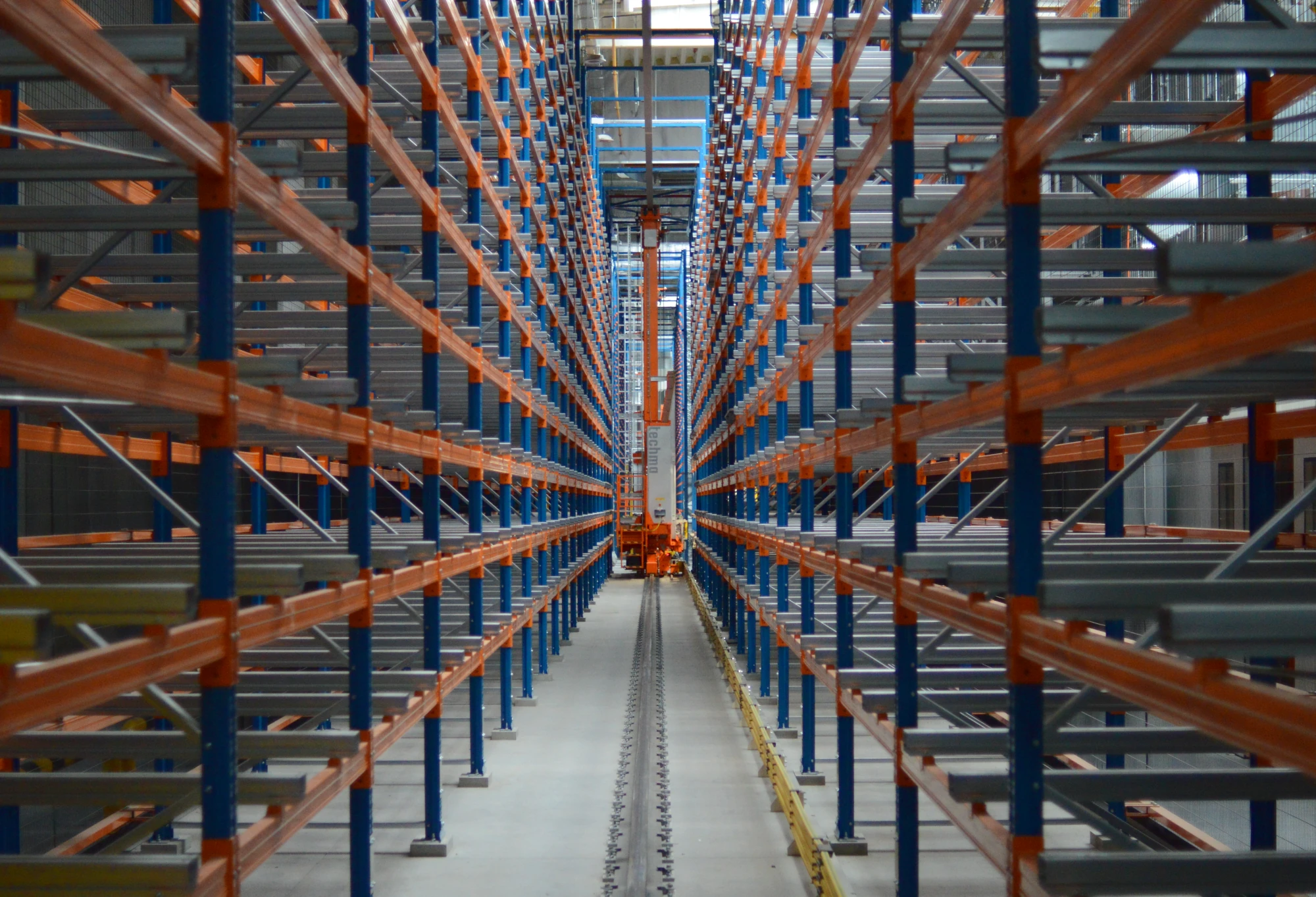WMS system as warehouse support – applications, functionality, and benefits

Properly selected software is now the foundation of every business. The same applies to companies involved in warehousing or production. In such operations, a Warehouse Management System (WMS) plays a key role. But what exactly is this solution, what functionalities does it offer, and what benefits can it bring to a warehouse?
What is WMS software?
Let’s start with a basic explanation: what exactly is a WMS? The acronym “WMS” stands for “Warehouse Management System” – software dedicated to warehouse management. The term precisely describes the core purpose of such software. Depending on a company’s needs, a WMS can offer a wide range of functionalities, often focused on optimizing storage and handling processes.
Closely related to WMS are ERP (Enterprise Resource Planning) systems. In some setups, ERP systems combined with WCS (Warehouse Control System) handle functions typically associated with WMS. In such cases, an additional database is placed above WCS, accessible to ERP, allowing both systems to support storage, handling, and transportation processes effectively.
WMS systems – applications
What types of businesses use warehouse management software? Logistics is the driving force behind nearly every industry, making WMS software suitable for any business with warehousing needs. Companies that benefit most include manufacturers, distributors, and logistics enterprises. WMS solutions are also commonly used in production environments with complex material flow – for example, when a product moves from the warehouse to a processing station, then through multiple locations, and finally back to the warehouse. This is especially relevant when the process includes AMR vehicles and multi-type product order picking.
In such cases, proper order issuing is crucial – to avoid holding products too long in storage, blocking material flow, or dispatching goods prematurely before the full order is ready.
For these needs, a feature-rich and advanced WMS solution is the best choice, offering numerous functions to support goods handling.
What functionality does a WMS offer?
Warehouse Management Systems come in many variants, differing in terms of available functions. However, most focus on several key areas. So what features does a typical WMS offer, and how do they improve inventory and warehouse operations?
Receiving and shipping goods
WMS software primarily supports the processes of receiving and shipping goods. A key feature here is the ability to record, store, and process information related to each product. To take full advantage of this, it's beneficial to integrate WMS with WCS and suitable readers or warehouse devices. The reader interacts with WCS, which verifies information with the WMS. This allows for full traceability of the product journey in the warehouse, including weight, dimensions, batch number, expiration date, or production date.
This functionality increases warehouse efficiency and simplifies product identification throughout the order cycle. It enables quick localization and verification of goods (e.g., a defective batch) and redirects them to inspection points – from which they may return to inventory or be removed. The risk of errors in receiving or shipping is significantly reduced thanks to automatic data entry via readers, scanners, or vision systems – eliminating the mistakes common in manual handling.
Order picking
WMS and WCS systems are also highly useful for order picking. WCS ensures correct sequence and timing of goods, minimizing errors and maintaining high warehouse efficiency. Based on the WMS order, WCS handles picking in the right order and confirms the completed tasks back to the WMS.
These systems are essential for more complex operations like cross-docking. In cross-docking, goods are collected from various sources and sent directly to the customer without storage. This reduces warehouse space usage and avoids overloading warehouse automation systems. WMS ensures precise order handling and tracking of item locations, making such logistics strategies more feasible.
Inventory management
Inventory tracking is one of the key benefits of a WMS. It enables real-time control of stock levels. When goods are received or dispatched, data is logged into the system, maintaining an up-to-date product database. This allows staff to easily find goods, identify items needing reorder, or detect overstock.
Additional capabilities include loss registration, damaged item blocking, automatic reorder notifications, and internal stock movements to optimize space during low activity periods (e.g., night shifts). WMS systems support various stock rotation methods like FIFO, FEFO, or LIFO.
Support for inventory audits
WMS can also streamline inventory audits. Unlike traditional time-consuming methods prone to errors, a WMS enables fast, partial, or full inventory checks. These can be scheduled during low activity or triggered on-demand. As a result, accuracy is increased, and the process is less prone to human error.
WMS and automation – supporting automated warehouses
Modern WMS systems can integrate with warehouse and process automation technologies. They can communicate with devices like conveyors, stacker cranes, automated vehicles, or lifts via WCS and PLC systems. For example, if a warehouse has four stacker cranes and a product needs to be picked, the WMS sends the request to WCS, which chooses the optimal crane based on load and queue data.
This enables warehouses to operate in fully automated, 24/7 models with reduced error rates and improved throughput. In such implementations, the WMS acts as the central command hub for process and automation control.
Why choose WMS?
There’s no doubt that WMS solutions are now fundamental for companies involved in production, storage, and logistics. Their growing popularity stems from the clear, measurable benefits they bring. WMS systems accelerate many processes by issuing simultaneous commands to WCS and AMR/AGV vehicles, automate product handling tasks, and reduce human error. They offer permanent, accurate data recording, making it easy to retrieve order history and continuously optimize operations.
Additionally, WMS supports more complex warehouse processes – crucial in automated environments. Fast data flow and real-time updates on product status are vital for effective warehouse automation. This makes WMS software an excellent fit for modern, innovation-driven facilities.
WMS implementation with MPL Techma
Now that you know what a WMS is, its functions, and the benefits it brings, the only thing left is choosing the right partner for implementation. If you’re looking for professionalism and a tailored approach, choose MPL Techma. We specialize in advanced industrial automation solutions that enhance material handling processes. While our offer focuses on intralogistics, we also serve companies with diverse operational needs.
Get in touch with our representatives to learn more about our solutions. We also invite you to explore our product offerings, available on our website.

